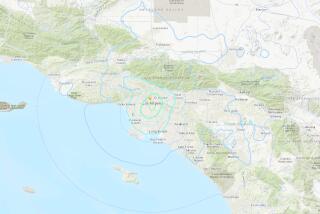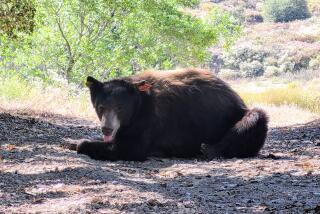A Los Angeles Times Special Report : Coping With The Quake : Recovering From Disaster, Preparing for the Future : Commuters Facing Freeway Ordeal : Traffic: With major routes blocked, drivers will need patience, careful planning, experts say.
- Share via
After beginning your day with radio traffic reports this morning, it might be best to calm your nerves with an easy-listening station. Believe this: For millions of drivers it is going to be tedious behind the wheel for some time.
With the state’s major north-south artery severed and some of the busiest roads twisted like saltwater taffy, it’s hard to keep track of which highways are closed or damaged. For how best to navigate the Southland post-earthquake, traffic experts offer some advice for getting from here to there.
In a nutshell: Don’t drive anywhere you don’t have to, leave extra early and--in the event you unexpectedly find roads blocked--carry a detailed map of the area you are leaving and heading to. And faithfully check radio traffic bulletins.
When it is deemed safe to return to the road--late Monday engineers had only begun checking the region’s freeway system and it was unclear how long repairs will take--commuters should allow double their normal drive time, according to David Rizzo of Long Beach, author of “Freeway Alternatives.” Most of all, he said, be patient.
“It definitely eases frustration,” Rizzo stressed.
Even some seemingly good alternate routes that have been spared structural damage may have fallen debris that hasn’t been cleaned up. So commuters should be prepared to venture farther from their normal freeway paths to find freer-flowing streets.
This is why drivers should also carry a detailed map: In case they need an alternate to their alternate route, said Rizzo, who has studied and teaches traffic flow patterns at Cal State Fullerton.
*
Perhaps the most critical freeway collapse in Monday’s quake was at the junction of the Antelope Valley (California 14) and the Golden State (Interstate 5), the latter Southern California’s key freeway link to the rest of California.
Next most devastating is the closure of the Santa Monica Freeway in both directions from La Brea Boulevard to the San Diego Freeway. The Santa Monica Freeway (I-10) is one of the most heavily traveled freeways in the world and a primary east-west route for hundreds of thousands of workers daily.
Undamaged streets that would otherwise make good alternate routes should be avoided if they intersect damaged freeways. Washington Boulevard and Fairfax Avenue, for instance, will surely be jammed with cars because of the overpass damage on the nearby Santa Monica Freeway.
Since the Santa Monica Freeway carries a daily average of 270,000 vehicles at La Cienega Boulevard, according to a 1991 Caltrans survey, the freeway’s closure is sure to create a traffic nightmare for commuters from Santa Monica and the Westside.
The following are primary road closures and suggested alternate routes:
Santa Monica Freeway
Between Santa Monica/Venice and Downtown Los Angeles, closed near the junction with Fairfax Avenue.
Alternate Routes: Olympic, Venice and Pico boulevards. Usually Washington would be a good route from Venice to downtown, but because it crosses near the damaged freeway, it is going to be backed up. Thus opt for Venice or Olympic, or other east-west streets. Same with La Cienega as a north-south artery. Best to drive just east of La Cienega Boulevard to a street like La Brea.
Interstate 5
Between San Fernando Valley and Bakersfield; closed at California 14.
Alternate Route: If not taking the coastal U.S. 101, northbound motorists can travel from the Los Angeles Basin by taking the Riverside Freeway east to Interstate 15 in Riverside County. Travel north on Interstate 15 to U.S. 395, which can be taken to California 58 in Kern County. Take 58 west to catch Interstate 5 or California 99.
Fairfax Avenue
Under the Santa Monica Freeway and linking Inglewood to Hollywood, closed.
Alternate Route: Use La Brea Avenue, Hauser Boulevard or La Cienega Boulevard.
California 118
Closed between the Foothill Freeway (Interstate 210) and Tampa Avenue in the San Fernando Valley.
Alternate Route: Victory Boulevard, Roscoe Boulevard, Sherman Way.
Interstate 405
Closed at Devonshire Street in Northridge.
Alternate Route: Exit at Devonshire Street and take Sepulveda Boulevard. (The 405 is also closed at Nordhoff Street and at the freeway tunnel to the northbound Golden State.)
Other Closings
The following roadways were closed Monday but there were either no alternate routes or no reliable information about whether those routes were passable:
California 14 at the I-5 intersection, between San Fernando Valley and Palmdale.
California 126 between Santa Paula and Santa Clarita.
California 23 between Moorpark and Fillmore, and all of Angeles Crest Highway.
Times staff writer Chris Woodyard contributed to this story.
More to Read
Sign up for Essential California
The most important California stories and recommendations in your inbox every morning.
You may occasionally receive promotional content from the Los Angeles Times.











